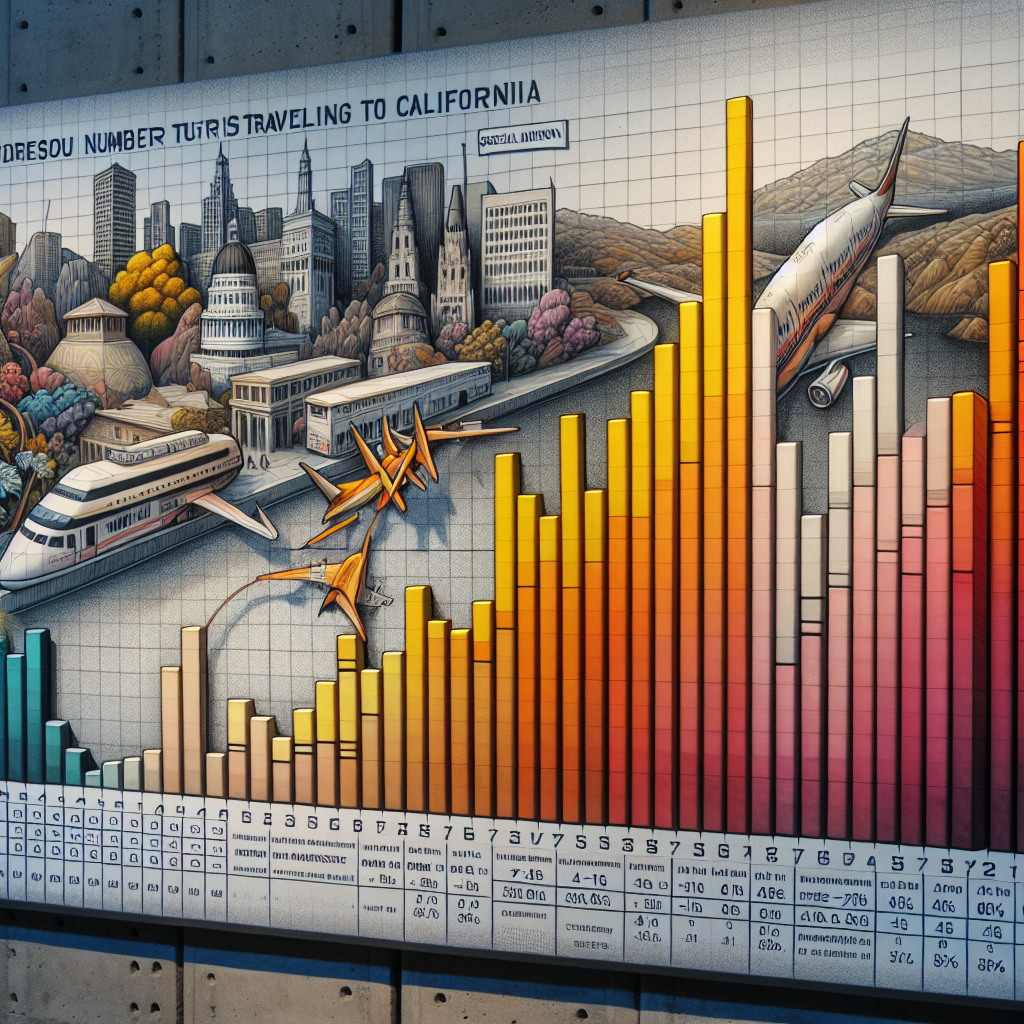The latest travel report shows a significant decrease in the number of people traveling to California. From January to August this year, there has been a decrease in the number of visitors compared to the same period last year for six months.
In August, the number of non-resident international air passengers entering the U.S. through all California ports of entry was 695,600, a 7.5% decrease from the same period last year. The total number of tourists in California’s 13 key markets was 523,800, a decrease of 7.6%.
Canada is the largest international market for California tourism. In August, the highest number of visitors came from Canada, nearly 75,000 people, but still a significant decrease of 37.6% compared to the same period last year. The second largest group was Chinese tourists, with 73,800 arrivals, a 1.8% decrease.
Markets that saw an increase in the number of inbound tourists in August compared to the previous year include Japan, Mexico, Italy, and the UK, with increases of 20%, 6%, 4%, and 2%, respectively.
Looking at the total number of visitors from different countries in August, following Canada and China were Mexico (63,200), Japan (60,800), UK (45,300), France (39,900), Italy (36,700), Australia (33,400), Germany (33,300), South Korea (26,000), and India (25,800).
In 2024, total tourist spending in California was $157.3 billion, with international tourists accounting for $26.2 billion (nearly 17%); the tourism industry generated $12.6 billion in tax revenue for California and provided 1.165 million job opportunities.
According to data from Los Angeles International Airport (LAX), there were 1.77 million fewer passengers from January to August this year compared to the same period last year. Hollywood, as California’s most popular tourist destination, has been greatly affected by the decrease in tourist arrivals this year.
The two major fires that broke out on January 7 and lasted for 24 days dealt a significant blow to the Los Angeles tourism industry. During the fires, air pollution over Hollywood was severe, making the normally bustling streets a place tourists actively avoided.
From data compiled by the California Tourism Bureau, June, which is typically a peak tourism season, saw a slightly lower number of non-resident tourists (559,700) compared to May (560,000) and significantly lower than July (900,000). The chaos caused by anti-ICE immigration law enforcement actions in Los Angeles in June may have led some tourists to alter their itineraries out of safety concerns.
NBC Los Angeles reported at the time that some international tourists who had planned to visit downtown Los Angeles began rearranging their schedules; others who were already in downtown felt unsafe. Despite the protests primarily focusing on a 1-square-mile area downtown, there were also small-scale demonstrations in other parts of the city.
Navid Sapir, Vice President of Star Line Tours, told CBS that they had lost nearly 10% of their clients this year. Whether due to handling the fires or political unrest, Los Angeles is no longer the most popular city.
Meanwhile, the tourism industry in Los Angeles is increasingly sluggish and is also influenced by the overall trends in the U.S. travel industry. According to Tourism Economics, a travel consulting company, in the first seven months of this year, the number of tourists only increased year-over-year in January and April.
In May, the California Tourism Bureau also predicted a 9.2% decrease in the number of international tourists this year. The report attributes this to a weakening consumer confidence, restrictions on major market air travel, and the strengthening U.S. dollar leading to increased international travel costs.

